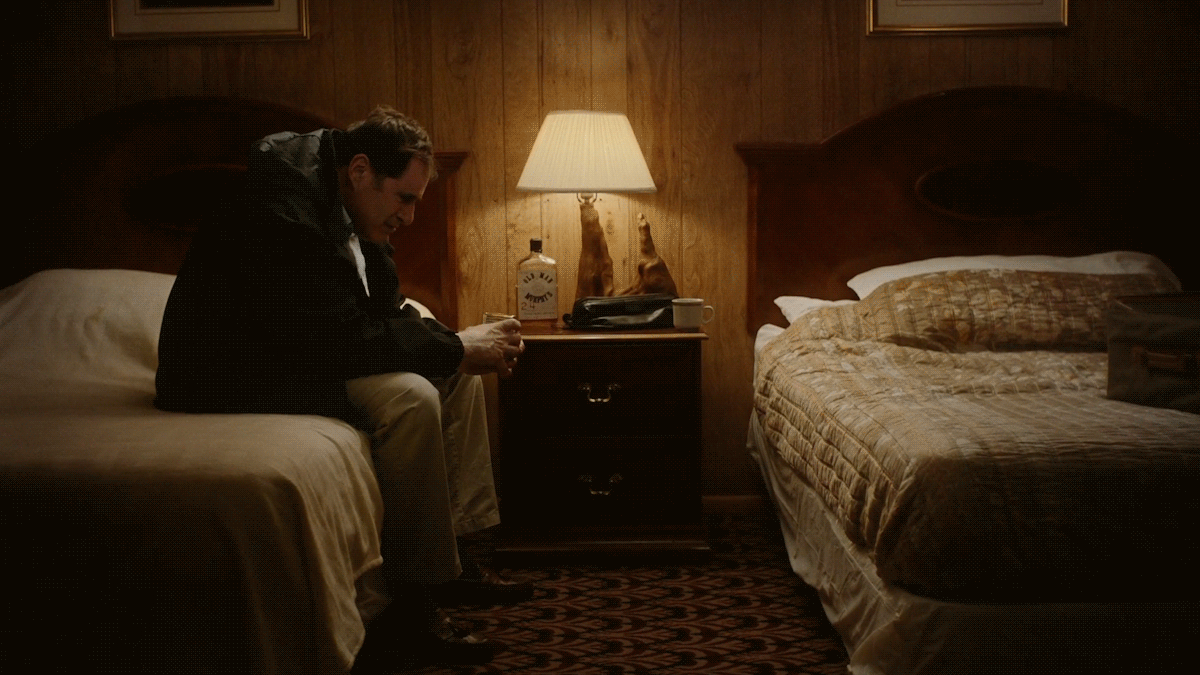An astronaut delivers one last message as he approaches a black hole.
After his short ‘Invasion‘ featured just a week ago, Peter Majarich praises us with another micro-short. ‘The Schwarzschild Radius’ takes place in a spaceship cockpit and seen through a recorded video call, and while the narrative is intriguing, it’s what’s progressing in the surrounding scene that really swoops in almost unexpectedly. Peter answered a few questions from us about how the film came to be.
Can you tell us a little bit about The Schwarzschild Radius, how did this film come about?
The passing of time is such a fascinating topic to me. It’s something we’re all immersed in every second of our lives, but we know so little about it. If you ask scientists, you’ll find that they don’t even agree on how to define it. The theory that time and space can be fluid and warped depending on where in the universe it’s observed from is another obsession. It’s such a rich area when it comes to being a springboard for story ideas. Of course, any good sci-fi isn’t just about the scientific topic or technology, it’s about how alterations to that topic can affect simple human relationships. I started from there. A huge part of making the story come to life was the opportune casting of my actor Govinda Roser (a special thanks to my friend Kristy Best for her help there). He immediately got the tone I was trying to create, and was extremely patient with me as I worked to hone the story and edit the film up until the very last minute.
Where does the title come from?
I explored lots of titles. I wanted something ambiguous that hinted at the time theme. A double meaning. But nothing felt right or original. I did some research into the actual science behind black holes and the term Schwarzschild Radius stuck out. It refers to the distance from a black hole at which you can or can’t escape the gravitational pull. It felt wholly unique and compelling.
How was the aging process created and how did you make it so seamless?
I wanted to tell a story involving time dilation in some way. I had the idea that if I could show a character ageing before the audience’s eyes it would make for a compelling effect. So, I started looking into how that might be done with software. There’s been lots of progress in creating the illusion of ageing on people’s faces using AI. The end result was created with the popular smartphone app FaceApp. Most people would’ve seen it work on still images, but there’s actually a feature that lets you use the effect on video. You need a lot of light though for it to work well, and it only worked well in a close up shot, not a wide. We did four or five takes right through with the “ageing” effect at various, increasing strengths, then merged them all using Frame Blending in After Effects. It had to be fast enough to age someone from 20-something to old age in three minutes, but subtle enough to not hit people over the head with it. It took a lot of tests to get it right!
What was the most challenging element for you in this film?
The time constraints. Not in run length, but the amount of time we had to make the film. I had about three months to make my last sci-fi short (Invasion), but only about 3 weeks for this one. All I had was a setting — the space capsule hotel here in Sydney. It’s such a cool setting. I’ve always wanted to use it as a location. There’s so much great texture in there, it immediately looks like a spaceship interior. But apart from the location, the story and character and ending all came after that. In a very short time.
What is your secret in creating very short shorts?
Put constraints on yourself. Use a short timeframe or a limited budget to your advantage. This film was an entry for the Moment Invitational Film Festival, a smartphone-based festival. The deadline was great inspiration to get something done in a short amount of time.
As for the run-time, I work in advertising. We spend each day creating stories that have 15 or 30 seconds or even smaller a window. It’s good practice for narrative work.
Do you have any tips or advice to offer fellow filmmakers?
Creativity is often compared to mining for gold. I used to think that meant searching for that one, huge, already-formed nugget amongst all the dust that you can take directly to the bank. Now I think it’s about finding a little spec of gold and then using your sweat and skill to try and turn that into something that one day, maybe might be of value. Ideas don’t come fully-formed, is what I’m getting at. A thought for a film might start with a song, a location, a line of dialog, or a feeling, mood or atmosphere. The story can be shaped around that. But don’t wait until you have the perfect seed to start something.




